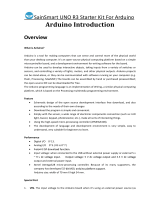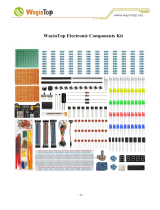
Range 2 – 400 cm
Resolution 0.3 cm
Trigger Input Pulse Width 10 µs
Dimensions (approx.) 49 x 22 x 15 mm
Weight (approx.) 9 g
Disposal
Electronic devices are recyclable waste and must not be dis-
posed of in the household waste.
At the end of its service life, dispose of the product in
accordance with applicable regulatory guidelines.
You thus fulfill your statutory obligations and contribute to the pro-
tection of the environment.
Legal Notice
This is a publication by Conrad Electronic SE, Klaus-Conrad-Str. 1, D-
92240 Hirschau (www.conrad.com.
All rights including translation reserved. Reproduction by any method,
e.g. photocopy, microfilming, or the capture in electronic data pro-
cessing systems require the prior written approval by the editor.
Reprinting, also in part, is prohibited.
This publication represent the technical status at the time of printing.
Copyright 2022 by Conrad Electronic SE.
5












